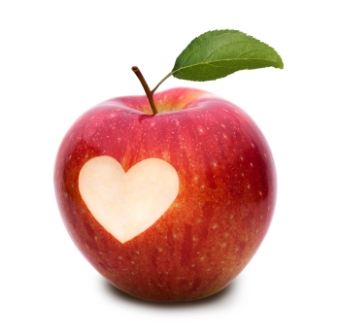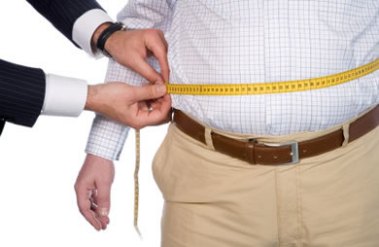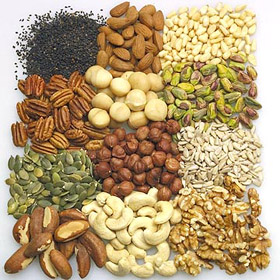Obesity-diet soda paradox
– Posted by Pillscribe
Usually, calorie-conscious people go for diet sodas as beverage, given an option. Diet beverages help to reduce calorie intake. These zero calorie drinks’ effectiveness as a tool in overall weight-management plan have been repeatedly endorsed by several studies.
However, new research shows that diet colas can work the other way round, as well. Diet drinks can make people eat more thereby ending up consuming more calories, according to a study by the Johns Hopkins University Bloomberg School of Public Health.
Obese people with the habit of drinking diet soda actually consume more daily calories from food, the study found. The U.S. National Heart, Lung, and Blood Institute-funded study used information from the 1999 to 2010 National Health and Nutrition Examination Survey.
After analysing the national patterns in diet-beverage habits, sugary-drink consumption and caloric intake by body-weight category, the researchers found that 11 percent of normal-weight, 19 percent of overweight and 22 percent of obese adults in US drink diet beverages.
Overweight people fond of diet beverages took in 88 more calories a day from solid food than those who drank sugary beverages. Meanwhile, obese participants who drank diet drinks consumed nearly 200 more calories a day from food than obese men and women who drank sugary drinks. Meanwhile, the normal-weight adults who drank diet soda got 73 fewer daily calories from food, while the normal-weight people who drank sugary drinks added 46 calories a day from food.
“Diet-soda drinkers who are overweight or obese are eating more solid food during the day than overweight and obese people who drink sugary beverages,” said study researcher Sara Bleich, associate professor of health policy and management at the Johns Hopkins.
But why do diet soda-savvy heavy people tend to eat more? Maybe the answer lies with the artificial sweeteners used to flavour diet drinks, Bleich said. Earlier studies have reported that artificial sweeteners disrupt the brain’s sweet sensors and give the feeling of less satiated. The feeling that the tummy is not full make one eat more food.
Many experts and the American Beverage Association, the trade group representing soda manufacturers, dispute the findings of the study.
Eat slowly to cut flab?
– Posted By Pillscribe
As children (or even as grown-ups), we have been told many a time that food should be taken in slowly. Hurrying with food could be dangerous as there is always a chance that food particles get lurked in the wind pipe. Therefore, everyone needs to have food more leisurely, relishing each and every item and spending enough time to chew it properly before downing.
The age-old practice of slow eating seems to have been accepted to be sacrosanct principle in the modern scientific age, as well. This is especially so for those who want to shed some excess weight.
People who consume food slowly could significantly curb their calorie intake and thereby mitigating the risk of getting obese, shows a recent study published in the Journal of the Academy of Nutrition and Dietetics.
The researchers carried out the experiment in a small group of people, which was a mix of both normal-weight and obese or overweight participants. All of them were given an opportunity to eat a meal under relaxed and then in a fast-speed environment. The slow meal was spread over an average of 22 minutes per meal. The average fast-meal time was about nine minutes.
Naturally, all participants consumed less food when eating slowly. But after eating a slow meal they felt less hungry compared to a fast meal.
Significantly, only the normal weight people actually reduced their calorie intake significantly when eating more slowly. They were found to consume 88 fewer calories when eating slowly. By contrast, the overweight group had only a 58-calorie reduction during the slow-eating session.
Overall, the obese/overweight group actually consumed less food during both the sessions than the normal-weight group.
“One possible reason [for the calorie drop seen] may be that slower eating allows people to better sense their feelings of hunger and fullness,” said Meena Shah, a professor in the department of kinesiology at Texas Christian University, in Fort Worth and the study author.
Fibre @ heart
– Posted by Pillscribe
Oft and oft it has been said that fibre-rich food is good for health. It can reduce damaging cholesterol. It improves heart function. Fibrous foods help in digestion and smoothens bowel movement. A high fibre diet boosts glucose metabolism and thus useful for diabetics. Several studies also found the importance of fibre content in food in preventing cancer…
Though the list goes endless talking about the wondrous fibres, there are very few studies that explain how exactly they work or what type of these nutritionally inert substances benefit the body.
Finally, here is some new research which aims to figure out importance of fibre in the prevention of cardiovascular disease.
To assess different kinds of fibre intake, researchers from the School of Food Science and Nutrition at the University of Leeds in England analysed total fibre –both soluble and and insoluble. They also looked at two broad categories of heart disease referred to as coronary heart disease and cardiovascular disease.
After going through the data gathered from the United States, Australia, Europe and Japan, they concluded that insoluble fibre the most beneficial for the heart. These fibres, found abundantly in whole grains etc, cut the risk of both types of heart diseases. In the meantime , high intake of soluble fibre such as that found in found in legumes, nuts and oats reduced cardiovascular disease risk more than coronary heart disease risk, whereas the fibre variety common in cereal reduced the risk of coronary heart disease more than the risk of cardiovascular disease.
According to the study published in BMJ, there was a significantly lower risk of both types of disease, for every additional 7 grams per day of fibre consumed.
The findings support current recommendations for increased fibre intake. The reduced heart disease risk associated with consuming more fibre could potentially benefit “many thousands” of people, said the authors of the study in an accompanying news release.
It’s critical that people understand that whole grains — such as barley, bulgur, millet, quinoa, brown rice, rye, oats and whole wheat, along with fruits, vegetables, nuts and seeds — are part of a heart-healthy diet, leading cardiologists were quoted as saying in the release.
10 Healthy weight loss tips
-Posted by Preethi Rahul, Nutrition Consultant, HEAL Foundation
The festive season is round the corner, and most of us are battling against our sweet temptations on one hand, and the growing paunch on the other. Globally, 1 in 6 adults are obese and the incidence of obesity has doubled since 1980. Gaining a few kilos occasionally is not frightening but drastic weight gain is something which should not be ignored.
Here are 10 weight loss tips that will help in curbing the flab and keeping you fit.
- Have a hearty, nourishing breakfast everyday
- Do not fast or feast
- Variety is the need of the hour – include whole grains, veggies, fruits, nuts, cereals, pulses, meat and lean meat products, dairy (skimmed) to get a healthy blend of all the nutrients
- Limit the intake of white culprits like sugar, salt, dressings and refined flour (maida)
- Limit liquid calories like fruit juices, sugary soft drinks, alcohol, etc.
- Watch your portion size. Eat a variety of foods but ensure portion sizes are controlled
- Indian snacks are major culprits that cause the bulge. Choose healthier snacks like popcorn without the extra butter and salt, puffed rice, sprouts bhel, crunchy vegetables/fruits, etc.
- Exercise regularly. Choose an activity which you would enjoy doing to keep you motivated
- Keep yourself hydrated. Drink at least 8 to 10 glasses of water in a day. You can also have healthy drinks like buttermilk, coconut water, green tea, clear soups, etc.
- Give in to your cravings once in a while. A weekly treat with a bar of chocolate or a slice of pizza or one plate of your favorite pani-puri should do the trick.
Weight loss is not magic. Diligently following a balanced diet along with regular exercise and lifestyle modification can help in healthy weight reduction.
Eat to live. Do not live to eat!
Losing Weight, Every Year!
-Posted by Atiya Nishat, Health Writer, HEAL India
Yes, of all good things we do on New Year’s Eve, making resolutions, that too about losing weight, is certainly one of the most important.
No matter how much weight we put on during the year, due to reasons best known to God, it is always on New Year’s Eve that our eye chooses to look upon it, compelling us to decide that it is high time to lose weight.
From consulting a nutritionist to piling up the refrigerator with healthy foods, from joining gym to buying sneakers, all of us would agree that we really put in our best effort to lose ugly flab and bulges accumulated over the year. But at the end of every year, no matter how wholeheartedly we gear up, somehow we end up putting on more weight, just to make yet another New Year resolution!
Actually, losing weight is not a decision which we take in a flare of emotions; it is also not about getting enrolled in any weight loss programme or fitness center. Maintaining a healthy body weight is a demanding process, which takes not just self control and motivation but also consistent effort and dedication, not just on New Year’s Eve, but all the year round.
We can lose weight gradually, without compromising on our health, by simply cutting back on extra calories, refraining from junk foods, eating all three major meals of the day, including fresh fruits and vegetables, having plenty of fluids and most important taking some time out for a little walk or jog.
So, this time while jotting down your New Year resolutions, make sure that you do not enlist ‘weight loss’ as now you know that shedding that worrying pound is not about thinking about it, but rather depends on acting on the thought.
Happy New Year!
Five Ways to Hang that Hangover!
–Posted by Neha Gupta, Health Writer, HEAL India
 So it’s that time of the year again, when we bid adieu to the old year and welcome the New Year with vigour and celebrations. Not to forget the endless parties and get-togethers, offering an opportunity to gorge on your favourite foods. It’s also when you let yourself go and indulge in boozing, when your spouse, parents or sibling are generous with their permissions!
So it’s that time of the year again, when we bid adieu to the old year and welcome the New Year with vigour and celebrations. Not to forget the endless parties and get-togethers, offering an opportunity to gorge on your favourite foods. It’s also when you let yourself go and indulge in boozing, when your spouse, parents or sibling are generous with their permissions!
But the hangover which follows the next morning after late night drinking is a wet blanket in all the festivities. So here are some ways to get rid of the hangover.
Eat your carbs
Snacking on a low fat, carbohydrate rich food like a toast or cracker in combination with some protein rich food like egg or cottage cheese helps to bring the dip in blood sugar level to normal, resolving the weakness and fatigue experienced.
Rehydrate
Alcohol dehydrates your body which further causes nausea and dizziness the next morning. Drinking loads of water and fresh fruit juices especially tomato juice relieves hangover. Caffeine should be avoided though because it will dehydrate further.
Replenish potassium
Due to dehydration the potassium levels in the body go down, causing hangover. Indulge in potassium rich foods like banana, orange juice or green leafy vegetables to replenish your stores of potassium, helping the muscles and nerves to regain their normal functioning.
Pop half an Aspirin
A pain reliever helps to alleviate the symptoms of a hangover but do take care to eat something before taking any medication or it can cause ulcers on an empty stomach.
Last but not the least- Sleep it off
Sleeping is one of the effective treatments for a hangover. It aids the brain to function in a normal way again. Exercising like light cardio/yoga has also been implicated to cure a hangover by metabolising the alcohol in the body.
Set with these tips, enjoy the end of year with a blast and say goodbye to your hangover woes. Be healthy, be joyful and wish you a very happy new year!
Why you need to go nuts (about nuts)?
– Posted by Pillscribe
Going nuts about nuts can be really helpful. In fact nuts make one live longer by reducing the risk death, says a 30-year study by Harvard.
Those who consumed a one-ounce daily serving of walnuts, almonds, cashews or other tree nuts regularly were less likely to die of cancer or heart disease or any cause during the study period.
The study involving more than 118,000 healthy volunteers provides the strongest evidence to date that eating nuts can reduce a person’s risk of death. Regular nut eating cut death risk from heart disease by 25 percent, cancer by 10 percent and diabetes by 20 percent.
Overall, people who ate nuts enjoyed longer lifespan even if they did not exercise, avoided fruits and vegetables or overweight.
“I think eating nuts is comparable to other potentially beneficial lifestyle measures like exercise and avoiding obesity and trans fats,” said senior study author Dr. Charles S. Fuchs, an oncologist at the Dana-Farber Cancer Institute and a Harvard Medical School professor.
The epidemiological study was published in the latest issue of the prestigious New England Journal of Medicine.
Previous studies also endorsed health benefits of eating nuts. The US Food and Drug Administration, nearly ten years ago, found that there was enough evidence to announce to Americans that eating 1.5 ounces of nuts each day “may reduce the risk of heart disease.”
Nuts are rich sources of folates, potassium, fiber, good monounsaturated fats and antioxidants. It has been found that nuts may help lower cholesterol, partly by replacing less healthy foods in the diet. The mono- and polyunsaturated fats in the nuts are known to benefit the heart.
Walnuts have omega-3 fats which may protect against irregular heart rhythms. Nuts also contain arginine, a substance that may improve blood vessel function.
Even though nuts are nutritional powerhouses, they are high in calories. The Harvard Men’s Health Watch cautions that if you add nuts to your diet, you’ll want to cut back on something else. Substitute nuts for chips or cookies, and avoid nuts that are fried in oil or loaded with salt.
Not surrendering to the pressure of high blood pressure
–Posted by Neha Gupta, Health Writer, HEAL India
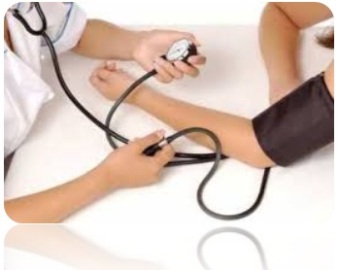 In India, according to the WHO, the prevalence of hypertension in men was 23.1 percent and in women was 22.6 percent equal to or above 25 years of age, in the year 2012. In fact, experts have revealed that 25 percent of the world’s adult population is hypertensive. Almost 10 percent of all deaths in India can be attributed to this non- communicable disease.
In India, according to the WHO, the prevalence of hypertension in men was 23.1 percent and in women was 22.6 percent equal to or above 25 years of age, in the year 2012. In fact, experts have revealed that 25 percent of the world’s adult population is hypertensive. Almost 10 percent of all deaths in India can be attributed to this non- communicable disease.
Hypertension is basically a chronic medical condition in which the blood pressure in the arteries is elevated. Studies have found that the prevalence of the disease is high in lower and middle class Indians. This has been attributed to stress, smoking and alcoholism. Long term stress in turn gives rise to other risk factors like disturbed sleep, binging on high salt and high fat foods, obesity and physical inactivity. Thus, it becomes a vicious cycle. Recognising hypertension early and treating it can cut down the risk for suffering from stroke drastically.
Experts and policymakers have emphasised the fact that our health care system still needs strengthening at all levels, that is primary, secondary and tertiary levels, with in-place surveillance, screening, prevention and management of hypertension and regular updating, re-training and enhancement of healthcare professionals providing hypertension related care. Addressing concerns like appropriate prevention strategies, minimisation of risk factors, early detection and treatment of hypertension in a population centric way is the need of the hour.
The fact that uncontrolled hypertension can cause serious organ damage and is often ‘silent’, it is imperative that health care stakeholders take it on a war footing to combat the disease.
Getting warmed up for the winters
–Posted by Atiya Nishat, Health Writer, HEAL India
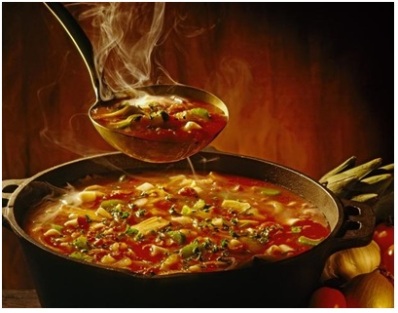 While festivity and celebrations beguile everyone around Christmas and New Year, what also grips people in north India, is the chilling winter season. Pullovers, overcoats and boots, people in this part of country leave no stone unturned to save themselves from cold weather. However, most of them remain oblivious to the fact that piling on the layers is not sufficient; the body also requires appropriate nutrition to counter winter specific environmental conditions and diseases.
While festivity and celebrations beguile everyone around Christmas and New Year, what also grips people in north India, is the chilling winter season. Pullovers, overcoats and boots, people in this part of country leave no stone unturned to save themselves from cold weather. However, most of them remain oblivious to the fact that piling on the layers is not sufficient; the body also requires appropriate nutrition to counter winter specific environmental conditions and diseases.
Nevertheless, I reckon people do have an idea that they require more calories in winter as it is common to see more sweet dishes and calorie-rich foods in winters, but this awareness is generally confined to winter-specific recipes, which is certainly not adequate. To ovoid ailments and infections in cold weather, it is important to ensure proper food and nutrition.
By taking proper servings of sea-foods, dry fruits, oil seeds, whole grain cereals, some herbs and spices and, of course, fresh fruits and vegetables, we can not only pump ourselves up with the required calories but with all those nutrients which are required to counter common winter ailments. Essential fatty acids, phyto-nutrients and vital vitamin and minerals, provided by all these foods help our body to develop immunity and vigor to keep up with the cold weather. These foods also provide us with vital nutrients which are required to keep physiological functions of the body normal in cold weather.
So when winters are already around, it’s high time that we should incorporate healthy foods in our diet and ensure optimum nutrition, not just to stay protected and active but also to enjoy this weather.
Breast Cancer- Mounting Disease Burden
– Posted by Neha Gupta, Health Writer, HEAL India
Recently it was reported that India is facing a breast cancer epidemic. With increasing number of women falling prey to this disease, breast cancer is now among the top ten leading causes of death in India.
Research studies say that globally around 1.3 million women are diagnosed with breast cancer yearly. What is alarming is the fact that in India, it is not detected early even with the presence of best treatments in place, thereby the number of women succumbing to breast cancer is high in India when compared to other developing countries. In India the age standardized incidence rate of breast cancer varies between 9 to 32 per 1,00,000 women.
Scientific evidence also states that Indian women tend to develop breast cancer a decade earlier than their western counterparts. Mortality due to breast cancer can be brought down only with early screening and diagnosis. Most cases are diagnosed late especially in the rural settings as screening facilities are not available. Added to thisfear about the disease, ignorance and poverty make matters worse.
In the urban areas, risk factors like low physical activity levels, high saturated fat diets and not-up-to-the-mark breast feeding practices pose a threat of suffering from breast cancer. Though data on these risk factors is not conclusive, few research studies do list these as possible risk factors.
Increasing incidence of breast cancer is a growing problem which can be combated with proper screening procedures, access to health care facilities, more penetration by awareness drives and dissemination of knowledge on risk factors, self examination methods and latest treatment modalities available. All is not lost yet!


